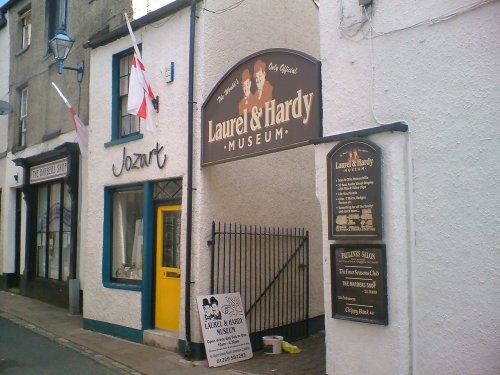Please login or click here to join.
Forgot Password? Click Here to reset pasword
The last foreign invasion of England took place in 1486 when Irish and Flemish supporters of Lambert Simnel landed at Piel in a desperate bid to seize the crown from Henry VII. Lambert Simnel, who was impersonating the imprisoned Earl of Warwick, was captured and given a menial job working as a servant in the Royal household.
Barrow Harbour was important, the gap between the mainland and the southern end of the Isle of Walney, Piel Island, was ideally suited as a place to build a defensive fortress. A castle had been built there as early as the 12th-century after King Stephen had granted the island to the monks of Furness Abbey who were in need of a place of safety sufficiently strong enough to keep out border raiders. The monks also built a warehouse for the merchandise traded from the abbey, wine, wool and food. Parts of the ruined
warehouse can still be seen.
Early in the 14th-century, by the gracious permission of Edward III, Furness Abbey held a license to crenelate the tower. A new Motte and Bailey castle was built with a three storey keep. It is the romantic ruins of this later castle that we see today.
The island of Piel is a lonely, remote place with a haunted atmosphere which speaks of its turbulent, historic past. It has been a place for sanctuary for monks, Kings and smugglers! Such is the variance of history. William Wordsworth visited in 1805, after a stay of four weeks he wrote evocatively of the island - as 'a rugged pile' 'thy form sleeping on a glassy sea' these words perfectly depict this beautiful swirl of land, thrusting above a silver sea, spread by the ruins of a castle, lost in the long ago mists of time.
Today visitors can enjoy exploring the castle ruins, take a drink at the ancient Ship Inn and admire the few 18th-century cottages straggled around the island. Piel makes a memorable, evocative visit - one that is not to be missed.

in the county of Cumbria
(4.4 miles, 7.1 km, direction NW)Barrow-in-Furnace is defined by three things, the glorious red Sandstone ruins of Furnace Abbey, founded by King Steven in 1132, its beautiful sea and coastline where visitors thrill to the exciting sight of tall ships competing in the Tall Ship's Festival, and the magical views of Lakeland's distant towering peaks...

in the county of Cumbria
(6.5 miles, 10.5 km, direction N)Dalton-in-Furness can be found at the meeting point of the roads leading from the mass of sands forming the Furness peninsula-one road leads from Ulverston and the other from.....

a Historic Market Town in the county of Cumbria
(9.7 miles, 15.6 km, direction N)Old town and port with cobbled streets and a pretty market square. It is surrounded by the Furness fells, Coniston Water, Lake Windemere, and the spectacular Cumbrian Mountains. .....

in the county of Lancashire
(11.6 miles, 18.7 km, direction SE)Fleetwood was once famous as a fishing port, but now it is more likely the visitor will see yachts and leisure boats lined up at the pretty quayside...

in the county of Lancashire
(12.5 miles, 20.1 km, direction E)Morecambe has always been one of the most popular and successful seaside resorts in England. It has one of the most spectacular views in England. Looking from the promenade the.....
All towns in Cumbria
St Mary of Furness was founded in 1123 by Stephen, later King of England...

The Laurel and Hardy Museum is appropriately sited in the town of Ulverston, Stan Laurel's birthplace. He was born in 1890, the.....

Dominating the skyline of the town, Lancaster Castle is of the best-preserved castles in England. This Castle is still used as a.....

This may not be as old as other English cathedral churches, but with its soaring spire reaching to a height of 240 feet and a.....

The Ashton Memorial with its green dome, overlooks the City from Williamson Park. It forms a famous Classical landmark and was.....